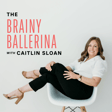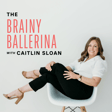
13. Using Cross-Training to Elevate your Ballet Technique with Veronica K
Veronica K is a former professional dancer turned educator. She combined her background as a dancer, Physical Therapist Assistant, and certified personal trainer to develop the Veronica K method of cross-training, an innovative approach to help dancers develop the strength they need to perform safely.
In this episode we chat all about Veronica’s dance training and professional career working on cruise ships. She shares about the injury that led her to go back to school for physical therapy and how she came to develop her own method of cross-training for dancers. We talk about the most important area dancers need to be focusing and where you can start incorporating cross-training even if you are short on time. This episode is full of actionable advice to help you prevent injuries and become a stronger dancer!
Key Moments:
- Early training [1:38]
- Attending college for dance [4:35]
- Her transition from student to professional dancer [10:03]
- Her experience dancing on cruise ships (and why she chose that route) [13:00]
- Going back to school to earn her physical therapist assistant degree [18:10]
- The most important areas dancers should be focusing on when incorporating cross-training [21:00]
- Veronica’s new cross-training course for dance educators [28:32]
- How to incorporate cross-training when you are short on time [39:37]
- Her biggest piece of advice for dancers pursuing a career [47:50]
Connect with Veronica:
WEBSITE: veronicakballet.com
INSTAGRAM: instagram.com/veronicakplatform
JOIN THE INSTRUCTOR CERTIFICATION WAITLIST: veronicakballet.com/certification
Links and Resources:
The College Dance Decision: thebrainyballerina.com/the-college-dance-decision
DRT: www.drttix.com/create-event (Make sure to mention that The Brainy Ballerina sent you!)
1-1 Career Mentoring: book your complimentary career call
Let’s connect!
My WEBSITE: thebrainyballerina.com
INSTAGRAM: instagram.com/thebrainyballerina
Questions/comments? Email me at caitlin@thebrainyballerina.com


